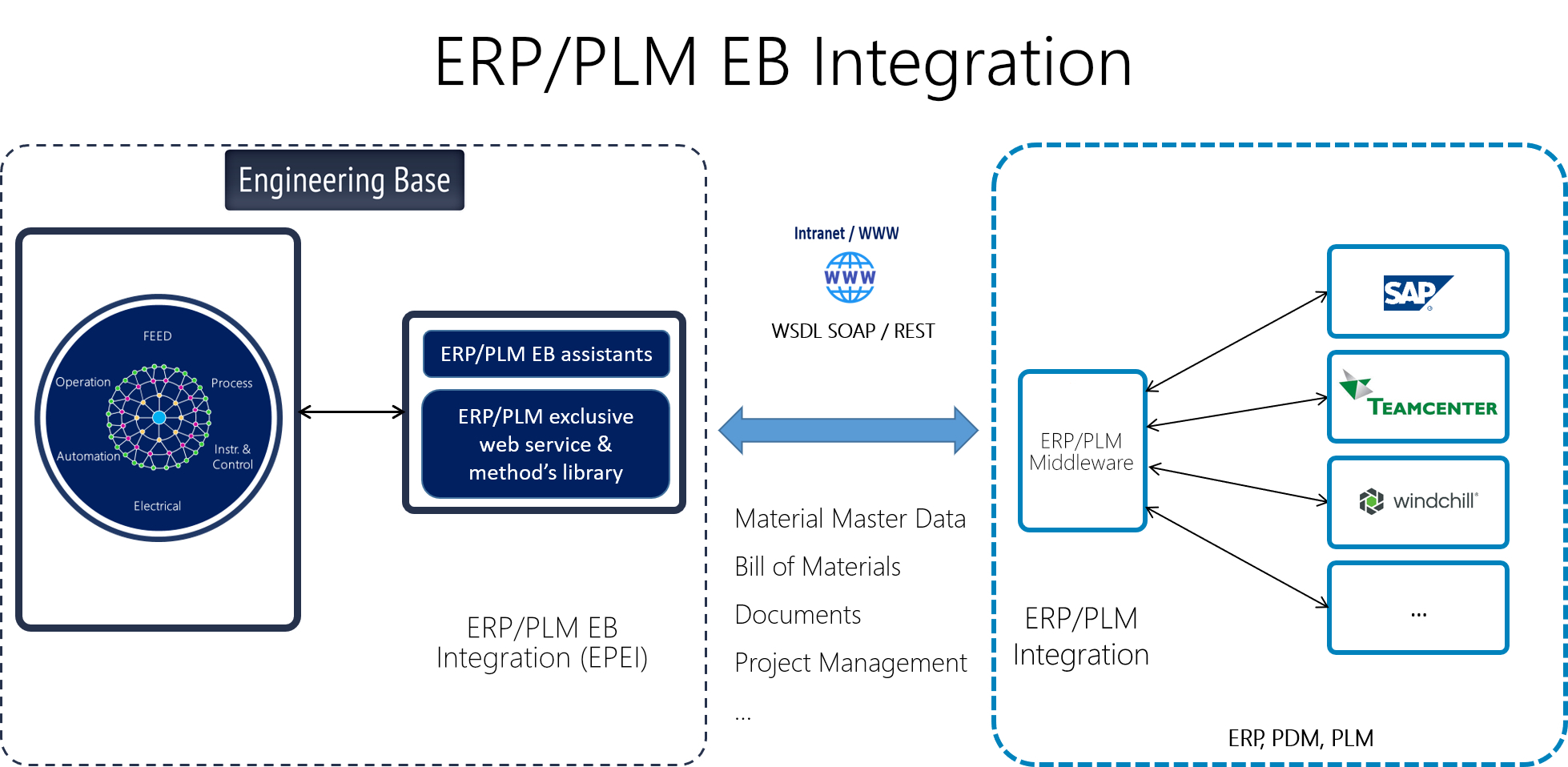Life is not possible in modern companies without enterprise resource planning (ERP) and product lifecycle management (PLM). In addition to corporate control and administration, ERP and PLM facilitate the management of diverse logistical challenges, but also promote product and process innovations. The larger the company and the more complex the products, the more complex the tasks and processes in the ERP. Well-known systems are, for example, SAP, Windchill or Teamcenter, yet there is a whole range of others; each contains numerous tools for different areas of application. There is a lot of special know-how involved in them requiring the appropriate experts.
Seamless from material master to project management?
Engineering also has various specialists who know their systems inside out. In order to achieve optimal company efficiency, process reliability and data consistency, ERP and engineering need to mesh seamlessly. Whether material master, bill of materials, document or project management: both sides are always involved and must be able to rely on up-to-date data. However, duplicate data storage and manual transmissions are enormously time-consuming and error-prone, and in addition to special knowledge of the respective non-specialist system, a licence is also required for this. And integrations for the data exchange between the two sides used to take even experienced professionals a lot of time every time.
Connection made easy
To efficiently meet all these challenges, AUCOTEC has developed a new, standardized interface for its Engineering Base (EB) cooperative platform that is very easy to integrate and does not require any special ERP/PLM know-how. The ERP/PLM Integration Platform (EPIP) can be "docked" to any company's own middleware, but also to middleware standardized by external experts. From the material master to project management, the integration ensures absolutely consistently self-configurable, regular and, above all, bidirectional data exchange. Without multiple data entries, double data storage and without update hassle! At the same time, the connection reduces the number of licences required in the engineering area for an ERP/PLM system and vice versa, because direct access to the respective other tool becomes superfluous. They all remain in "their" respective system.

Service is everything
The interface works as a service: the entire interactive communication can run in the background via web services, EB does not have to be launched for this. In this way, time-based automatisms can be defined and both ERP/PLM and engineering always have reliably up-to-date data. The interface, which always remains the same on the EB side regardless of which ERP system is connected, significantly reduces the integration and maintenance work. From set-up and implementation to configuration, it saves around 50 per cent of the time otherwise required for certain ERP integrations. The choice of ERP system remains flexible. If the cooperation solution with a standard middleware is chosen, there will never again be any need to schedule time for installing updates and adjusting interfaces.
Workflow support
Every data exchange via EPEI can also be controlled with EB's Workflow assistant. The departments involved can be guided specifically through their individual workflow. And so nothing can be forgotten or overlooked. The wizard takes into account different rights levels as well as freely definable release procedures.


